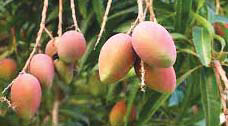 The Kenya Plant Health Inspectorate Service is training experts to help detect a new invasive mango mealybug pest.
The Kenya Plant Health Inspectorate Service is training experts to help detect a new invasive mango mealybug pest.
According to the UN-Food and Agriculture Organization that is supporting in training the experts, early detection and early identification of the pest will give countries in Eastern Africa region an advantage to launch early action.
This will help mitigate the damaging effects of the pest. Mango mealybug feeds on the tree and produces droppings which make the leaves black and sticky. This lowers the strength of the tree and its production of mangoes. During heavy attacks, a whole part of the tree looks blackish in colour.
The mealybugs are easily spread through international trade in plant materials. The 18 diagnostic experts come from Burundi, Djibouti, Ethiopia, Eritrea, Kenya, Rwanda, Somalia, South Sudan and Uganda.
The training is being carried out by KEPHIS in collaboration with FAO, the Natural History Museum, London, UK and the Centre of Phytosanitary Excellence (COPE). Orlando Sosa, FAO Agricultural Officer in Eastern Africa said the pest was first detected in 2019 in Rwanda.
“The pest has since spread to Uganda and Burundi. As part of its efforts, FAO has engaged partners on the identification of mealybugs and their parasitoids (natural enemies) and KEPHIS to train personnel from the Ministries of Agriculture from each of the nine countries that make up the FAO Eastern Africa sub-region,” said Sosa.
Devastating damage
The experts will be tasked to learn the methods for field detection, sample collection, sample preparation, slide preparation and diagnosis of specimens of a range of mealybug species that are common to Eastern Africa.
He explained that the damage they cause can be devastating, leading to crop loss, restricted market access and increased cost of production.
“These pests can be easily overlooked due to their small size, cryptic habits and because they do not resemble most other insects. Management of mealy bugs is difficult as they develop resistance to conventional control products. In recent years, they have become major pests, with new introductions of invasive species like papaya mealybug, cotton mealybug and now the mango mealybug,” said Sosa.
Theophilus Mutui, KEPHIS managing director said it is only with specialized diagnostic confirmation that the presence of the mango mealybug can be made and thereby, the relevant action to control its spread can be taken.
He pointed out the need to remain vigilant and conduct surveys of urban and rural areas in order to detect as early as possible the presence of the mango mealybug.
Mutui said Kenya is committed to collaboration that contributes to the reduction of plant health risks through minimizing trade costs by making trade in plants, plant products and regulated articles more transparent and efficient.
“We recognise the limitations of available resources and structures that have led to challenges in the management of invasive species most of which require countrywide and regional management. This can only be overcome through coordinated and comprehensive collaboration, partnerships and sharing of information that will facilitate preventing the introduction, spread and establishment of mealybug pests,” he said. Sosa said it is not a matter of if mango mealybug will arrive in Kenya and other Eastern Africa countries but a matter of when.
He said FAO is taking action by raising awareness of the threat of the mango mealybug across Eastern Africa by training experts to identify mealybug species in their territories and specifically the mango mealybug.
“FAO is also boosting capacity for early detection in agricultural and urban areas, facilitating the importation and release of the effective biological agents following a strict adherence for scientific review of the safety of introduction of new organisms into the territories of the affected countries,” said Sosa
